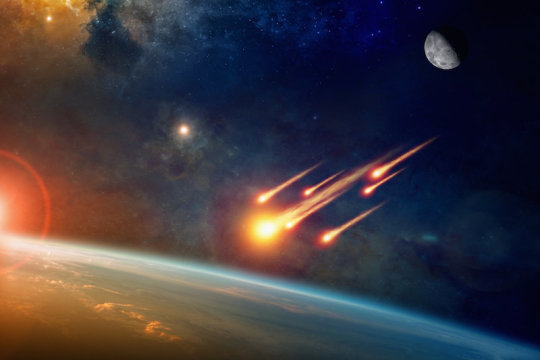[ad_1]
Chemical analyses of meteorites allow for a better estimation of the chemical composition of the Earth and its potential building blocks. That is the result of a study conducted by a research team from the Institutes of Geology and Mineralogy at the Universities of Cologne and Bonn. The results have appeared in the current issue of Nature Geoscience.
The study focuses on the distribution and origin of so-called volatile elements such as zinc, lead and sulphur, which have low boiling temperatures in space. The newly determined distribution of these volatile elements in the Earth shows that some of these building blocks have a chemical composition similar to carbonaceous chondrites, an aqueous group of primitive meteorites. These meteorites come closest to the composition of the original solar nebula from which our solar system formed. Thus, the study also indirectly provides another valuable indication of the source of vital components such as water, carbon and nitrogen on Earth.
The chemical composition of the Earth is not easy to determine. Geological processes such as the formation of the metallic core and the outer crust led to a redistribution of the elements composing our planet. For example, elements attracted to iron have migrated into the Earth’s core, while elements attracted to silicate compose the rocks of the Earth’s mantle and crust. ‘Today, we only have access to samples from the silicate part of the Earth, which is why we can only estimate the chemical composition of the entire Earth through the additional analysis of primitive meteorites — the potential building blocks of the Earth,’ said Professor Carsten Münker from the University of Cologne. The recent publication makes an important contribution to understanding the chemical composition of the deeper layers of the Earth.
The research team focused on the distribution of volatile trace elements such as the rare metals indium, cadmium and tellurium. This is a particular challenge since a proportion of these metals was lost already at the beginning of the solar system due to their volatility. Today, they are extremely rare both in meteorites and in the Earth — less than one gram per ton of rock. ‘So far, we have always assumed that the distribution of these elements decreases linearly the more volatile they are,’ said the geochemist Dr Frank Wombacher, one of the initiators of the study.
By using high-precision methods, however, the scientists arrived at a surprising result. ‘While the frequencies initially decrease linearly, contrary to expectations the most volatile elements are all equally depleted,’ explains Ninja Braukmüller, a doctoral researcher who carried out the study in Cologne. Indium and zinc, the volatile elements attracted to silicate in the Earth’s mantle, also show this pattern. ‘This seems to be unique among the potential building blocks of the Earth,’ says Dr Claudia Funk, a co-author of the study. The results allow the scientists to conclude that the building blocks that have brought volatile elements to Earth are similar in their chemical composition to that of primitive carbonaceous chondrites.
Story Source:
Materials provided by University of Cologne. Note: Content may be edited for style and length.
[ad_2]















